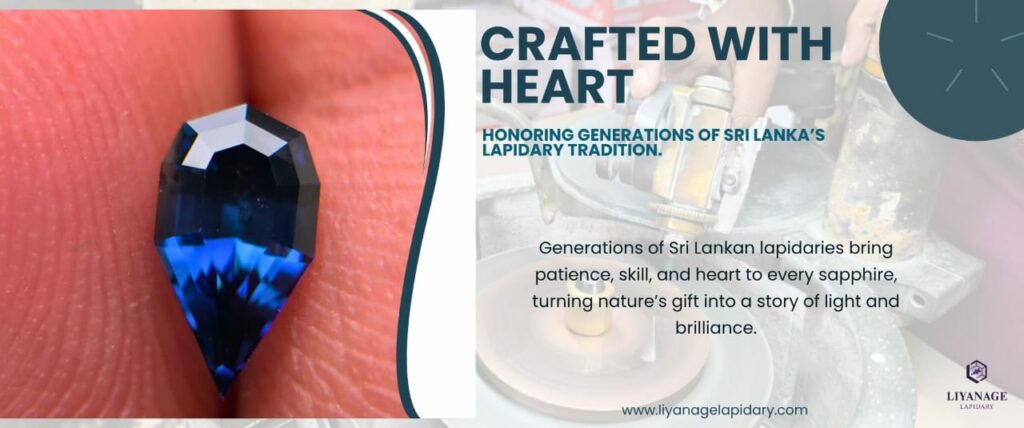In the quiet gem lands of Rambuka village around mining in Sri Lanka, a small rough sapphire was unearthed — just 1.50 carats, measuring 8.8 × 6.2 × 5.0 mm. To an untrained eye, it was only a dark, irregular tabular crystal, but to a cutter’s vision, it carried an intense royal blue body color, rich and full of potential. This stone’s journey from rough to polished gem began right there — between the earth and the hands of experience.
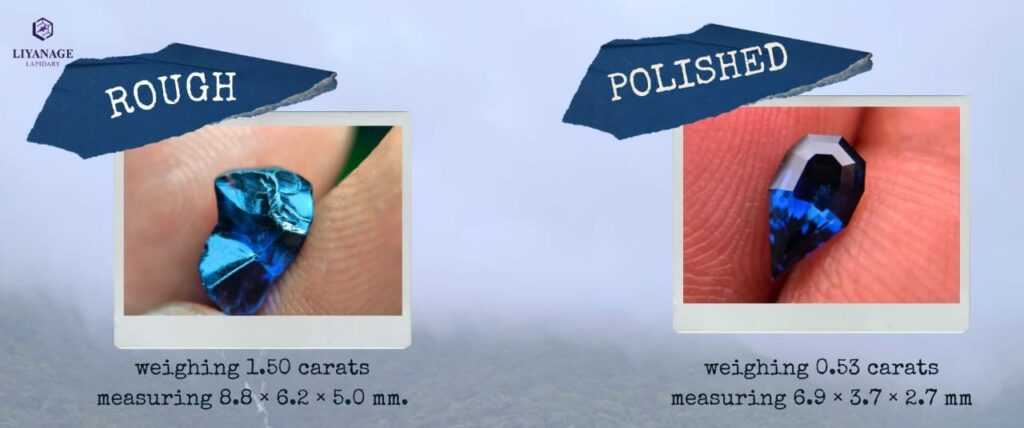
Each sapphire tells its own story, and this one was not about size but about color and purity. The rough showed strong blue zones with minimal silk, a sign of unheated natural formation. The challenge for the cutter was to preserve that deep saturation while bringing out the maximum sparkle. Every decision — from where to place the first cut to how to angle the facets — meant balancing yield with brilliance.
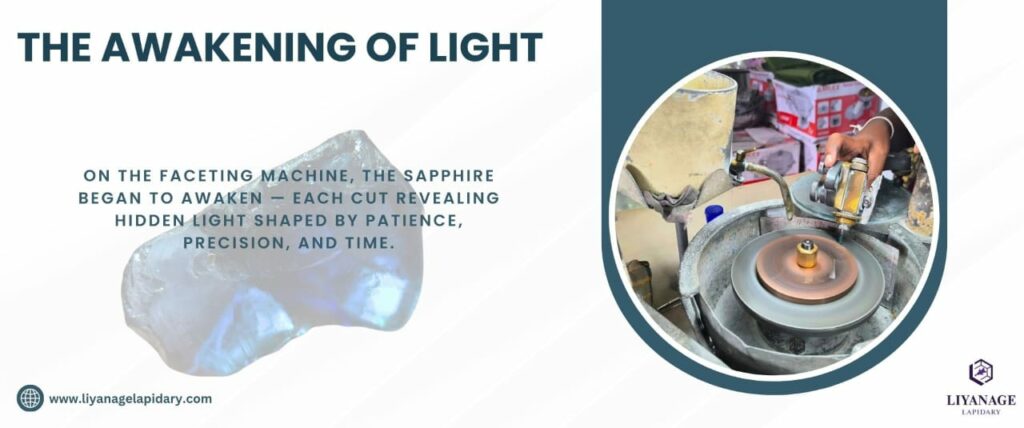
On the faceting machine, under a slow-moving diamond lap, the transformation began. With patience and precision, inclusions and surface fractures were studied under the torch. The cutter decided on a fancy pear shape, maximizing the color center while creating a balanced outline for light reflection. The stone gradually took form, each facet opening a new face of light that had been sleeping within for millions of years.
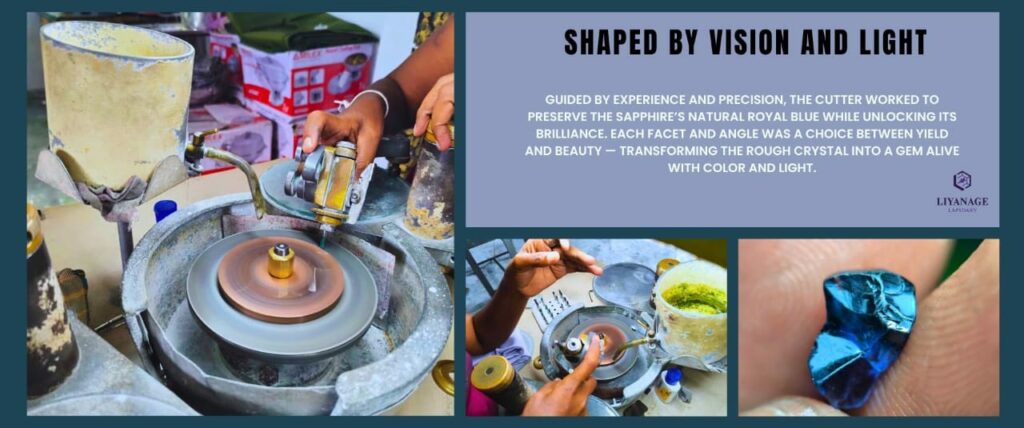
After polishing, the sapphire emerged as a 0.53 carat gem, measuring 6.9 × 3.7 × 2.7 mm — small but mesmerizing. Its intense royal blue tone remained untouched by heat, proudly natural, carrying that true Ceylon character of brilliance and purity. What once looked like a dark crystal now gleamed like a drop of ocean under the sun.
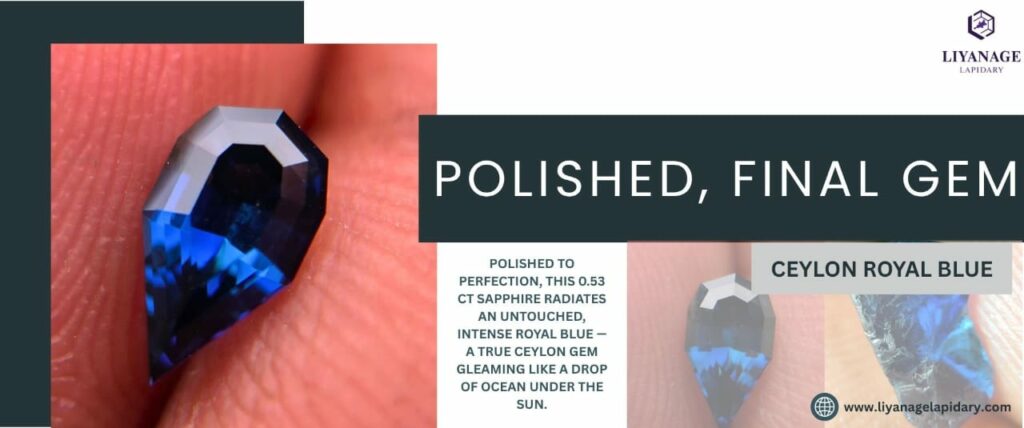
This sapphire’s journey from rough to finished gem mirrors the craft of Sri Lanka’s lapidaries — generations of skill, intuition, and respect for nature’s art. Every finished stone we hold today is not just a product, but a story of light revealed, crafted with patience and heart.

